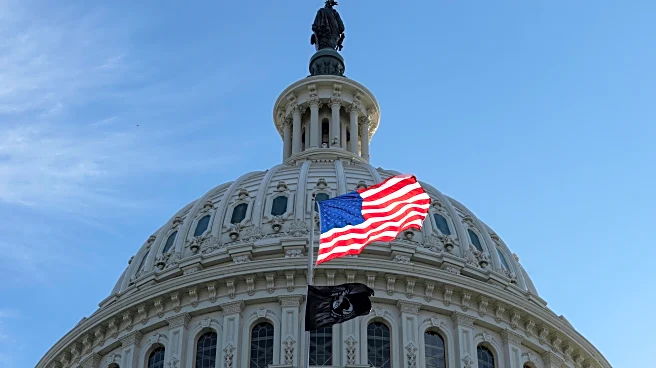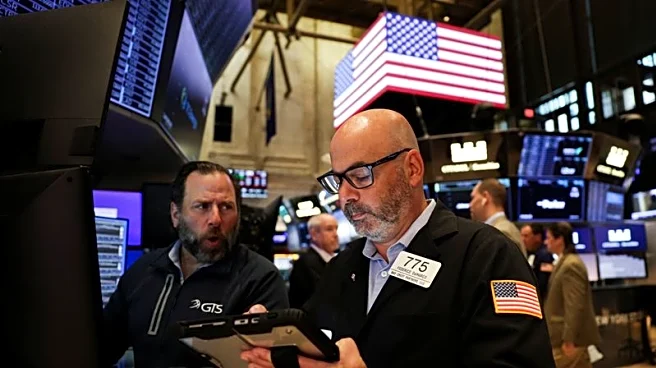What's Happening?
Gold prices have continued their upward momentum, trading at $3,889.46 per ounce, as market uncertainty, geopolitical tensions, and economic data flows converge to boost demand for safe-haven assets. The U.S. ADP Non-Farm Employment Change for September showed a sharp decline, fueling concerns of a slowing economy and potential Federal Reserve policy shifts. The ISM Manufacturing PMI indicates contraction in the manufacturing sector, adding to economic pressures. The threat of a U.S. government shutdown further exacerbates market uncertainty, driving investors to seek protection in gold.
Why It's Important?
The rise in gold prices underscores the impact of economic and political uncertainties on investor behavior. As a safe-haven asset, gold provides protection against currency devaluation and inflation, attracting capital inflows during times of instability. The disappointing U.S. economic data and potential government shutdown could prompt the Federal Reserve to adopt a more dovish stance, influencing monetary policy and market dynamics. The ongoing geopolitical tensions and economic challenges may lead to long-term shifts in investment strategies and economic policies.
What's Next?
Gold prices are likely to remain elevated as investors continue to seek protection against economic and political uncertainties. The potential government shutdown and Federal Reserve policy decisions will be closely monitored, as they could significantly impact market sentiment and investment strategies. The ongoing geopolitical tensions and economic challenges may sustain high levels of uncertainty, supporting gold's position as a key investment asset.
Beyond the Headlines
The threat of a U.S. government shutdown highlights the political and economic challenges facing the country, with potential implications for public services and economic activity. The disappointing economic data and potential Federal Reserve policy shifts could lead to long-term changes in investment patterns and market stability. The geopolitical landscape and economic policies may influence global trade dynamics and industry sectors reliant on these metals.












